If you haven’t yet read the first two posts about our journey to Mt. Everest, you can catch up by reading them here:
Post #1 – Everest Basecamp Part I – The Trek Begins!
Post #2 – Everest Basecamp Part II – The Altitude Hits Us
After a few days of rest and relaxation in Pheriche Kathy was ready to get back on the trail, so we packed up our things and left in the morning to head back up towards Lobuche.
The number of yak trains and porters on this part of the trail was significantly higher than the trail we had previously taken (the Dingboche to Leboche trail) because the Pheriche to Leboche trail is a bit of a shortcut to Everest. As we walked along the trail we were consistently amazed at the superhuman ability of the Nepalese porters who carry supplies to Everest Base Camp for the summit expeditions. Many of these porters are Sherpas, who are a unique high-altitude culture group in Nepal that are renowned for their elite mountaineering ability. Most Sherpas are born at high-altitude (3,000m/9,800ft or higher) and are thus used to working in the extremely tough conditions. Nevertheless, it was still amazing to see them carrying massive loads on their backs while powering their way up the mountain past us. And when I say massive, I am not over-selling it. We would consistently see porters carrying loads in the range of 50-60 kilos (110-130 lbs) on their backs. Our guide even told us it wasn’t unheard of for porters to carry up to 80 kilos (175 lbs) on their backs UP the mountain! Quite unreal.
It also wasn’t just heavy loads being carried, they were also carrying extremely large and ungainly objects up the mountain. Here are a few examples of things that we saw on the backs of individual porters: 140 beers (yes, I counted), a 4’x12′ long wooden table (folded in the middle), a generator and a tank of gas to go with it, four 4’x8′ sheets of 3/4 inch plywood, four full-sized trekking packs lashed together (I struggled with just one), and one guy that was carrying an entire wooden dresser (the 6ft tall variety)! These porters made us feel like absolute wimps. We were only carrying packs which weighed 10-12 kilos (22-26 lbs), yet we were consistently struggling up the trails. To top it off, the porters would always greet us with a friendly “namaste” as they walked past us. I don’t know how they do it, but the porters manage to maintain a very friendly and positive attitude while doing very difficult work. We certainly gained a lot of respect for these extraordinarily hard working people.
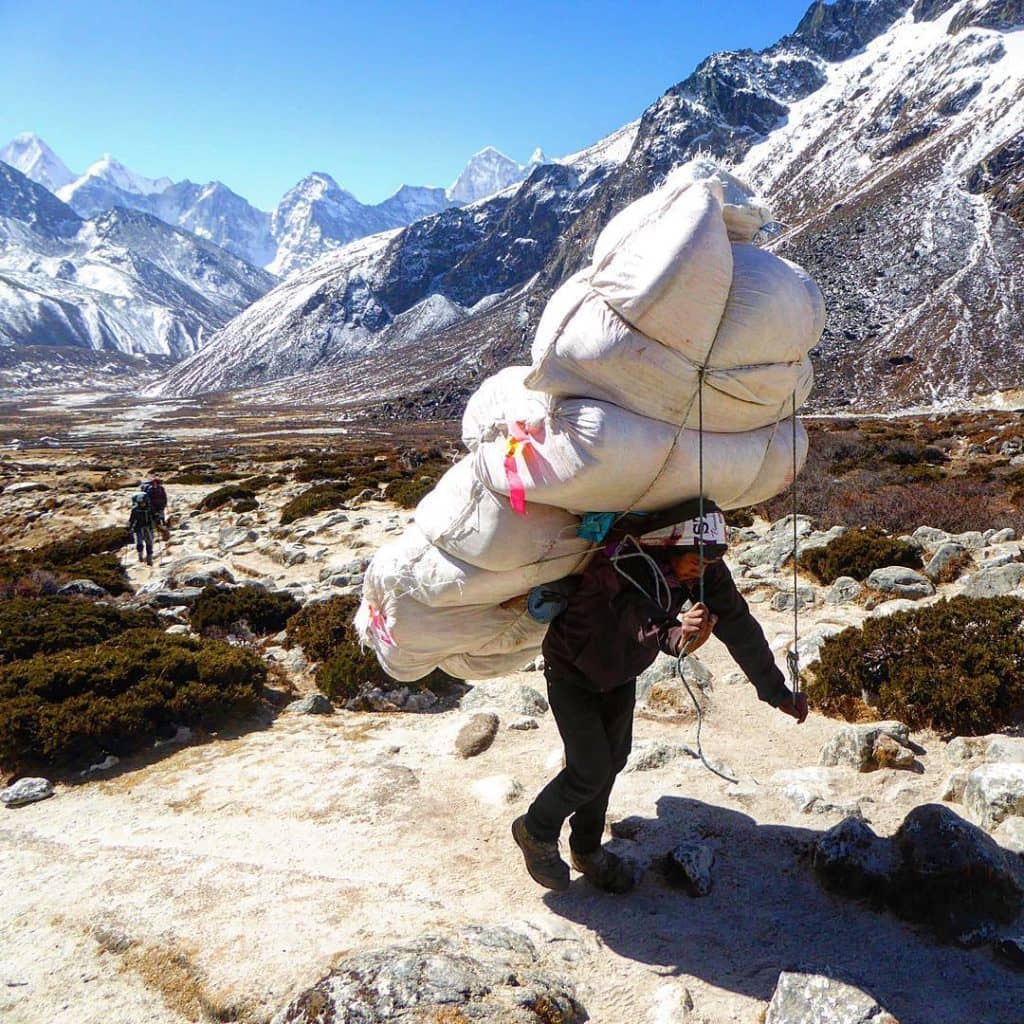
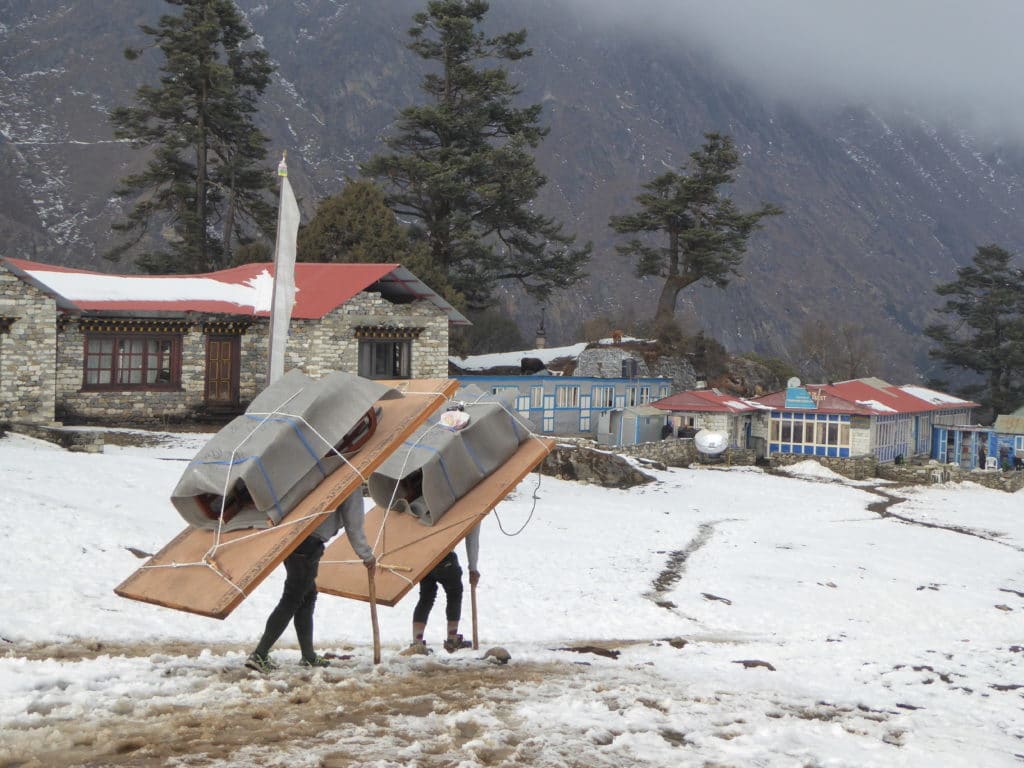
It again took us only a couple of hours to reach the windy village of Thukla, however the trail was a bit more difficult than the one we had previously taken to get to Thukla. We already knew we had the 300m/930ft gravel mountainside to climb after Thukla, so we weren’t too thrilled that we were already getting tired before even making it to lunch. We stopped in in Thukla for a quick lunch and then headed up that gravel monster. Much to our delight, the climb up this steep mountainside seemed much easier the second time around. Perhaps we had already gained a few more red-blood cells from having already been higher than this point just a few days prior? Whatever the case, we were happy to have made it up without too much trouble. We rolled into Leboche a short time later, back at the spot that had almost ended our trip just a few days earlier.
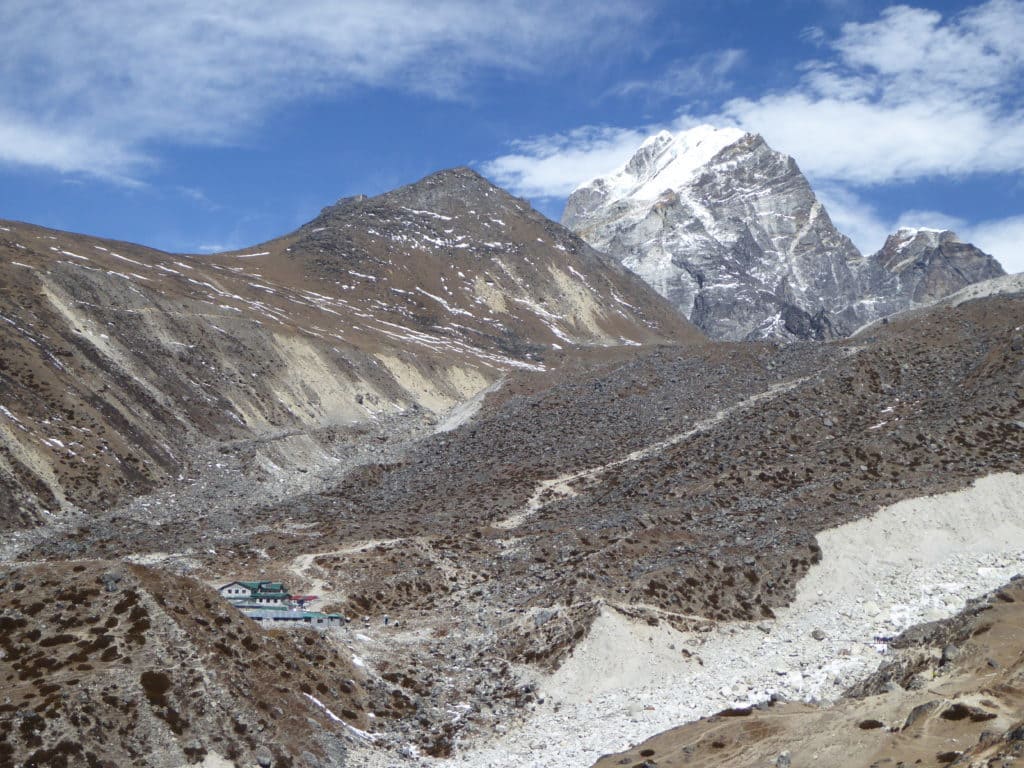
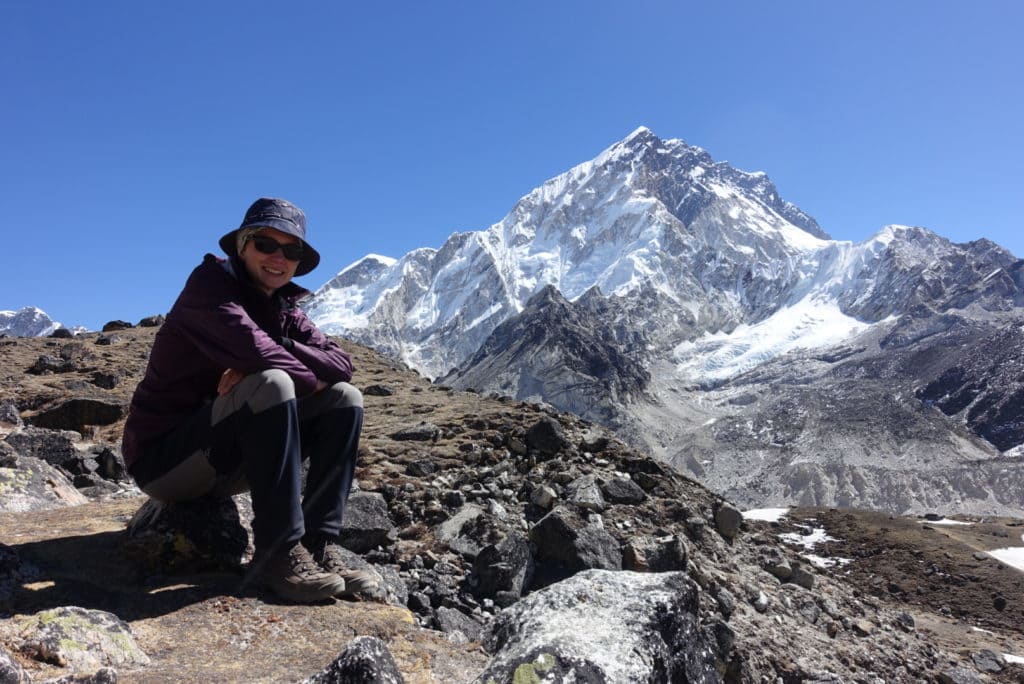
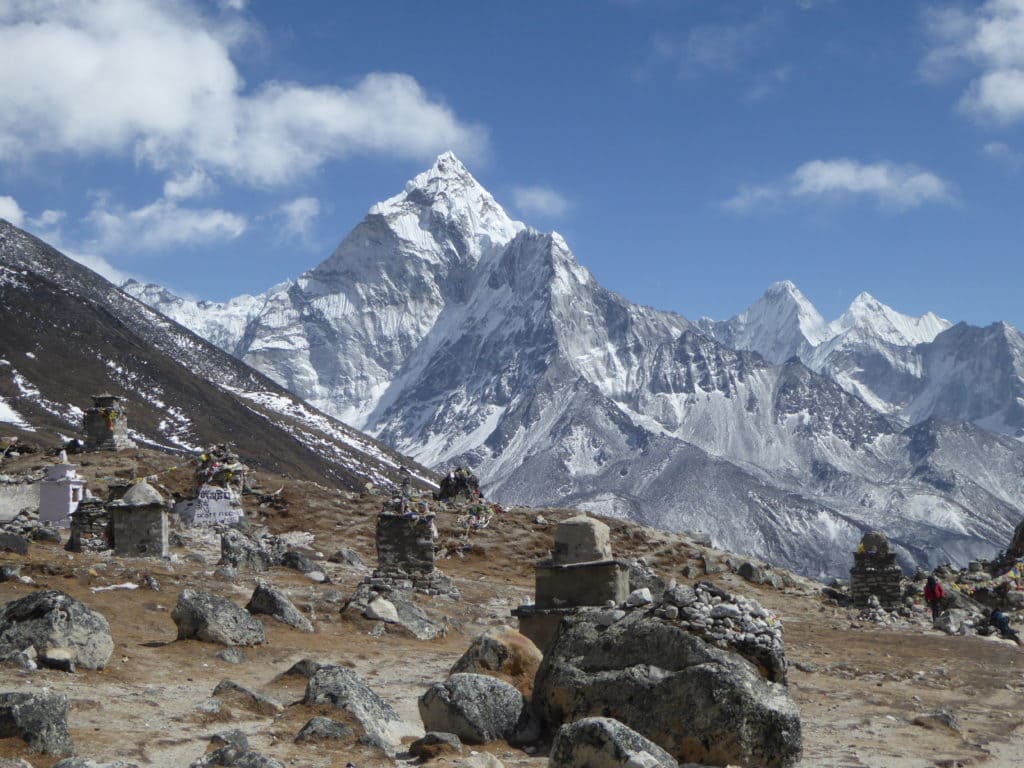
All of us woke up the next day feeling decent. None of us felt great as the long days of trekking were beginning to take their toll. Most importantly however, none of us felt any effects of altitude sickness. We ate our typical breakfast of apple porridge and made our way towards the town of Gorak Shep. The plan for the day was to drop off our packs and eat lunch in Gorak Shep, then head to Everest Base camp before returning to Gorak Shep again to stay the night. It would turn out to be one of the toughest days of the trip. The scrubland that was easy to trek through gave way to a desolate landscape of boulders, gravel, and ice. The last hour or two of the trek into Gorak Shep consisted of boulder hopping followed by constant up and down climbs of rocks and slippery gravel. It was exhausting. Karen especially felt the effects of this difficult terrain and reluctantly let our porter carry her bag to make the climb a bit easier. High-altitude is merciless. We finally made it into Gorak Shep around 12 p.m., about an hour later than anticipated. Karen was still struggling a bit, but managed to get some food down and regain a bit of energy for the afternoon’s trek to basecamp. Thankfully she began to feel better once we started hiking again in the afternoon.
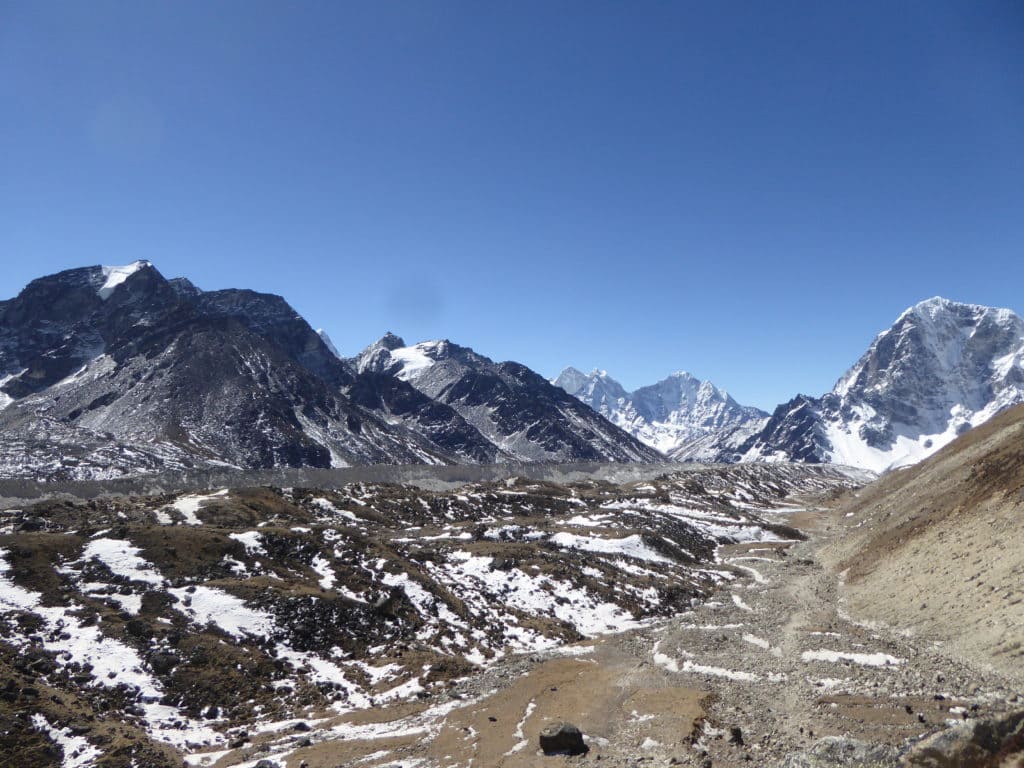

The hike from Gorak Shep to Everest Basecamp was similar to what we had experienced late in the morning. Rocks, followed by boulders, mixed with gravel, topped off with ice and snow. If it wasn’t for the abundant evidence of water in the form of ice and snow we would have thought we were hiking on the moon. A truly desolate, yet remarkably beautiful landscape. As we followed a ridge alongside the Khumbu Glacier Mt. Everest slowly began to come into view, asserting itself over the surrounding mountaintops of Nuptse, Cholatse, and Lhotse. We were yet again forced to stop and admire the beauty of this mountainous terrain. It isn’t just the black pyramid of Everest rising above the surrounding snow-clad peaks that is beautiful, the Khumbu Glacier itself is something to marvel at. The glacier flows down from the slopes of Everest and Lhotse into the valley below and slowly carves a path for itself as it migrates downhill. It is a mix of densely packed blue ice with a topping of rocks and snow that careen down the mountainsides onto it. As we walked alongside it we could occasionally hear the cracks and booms of the glacial ice as it made its way down the valley.
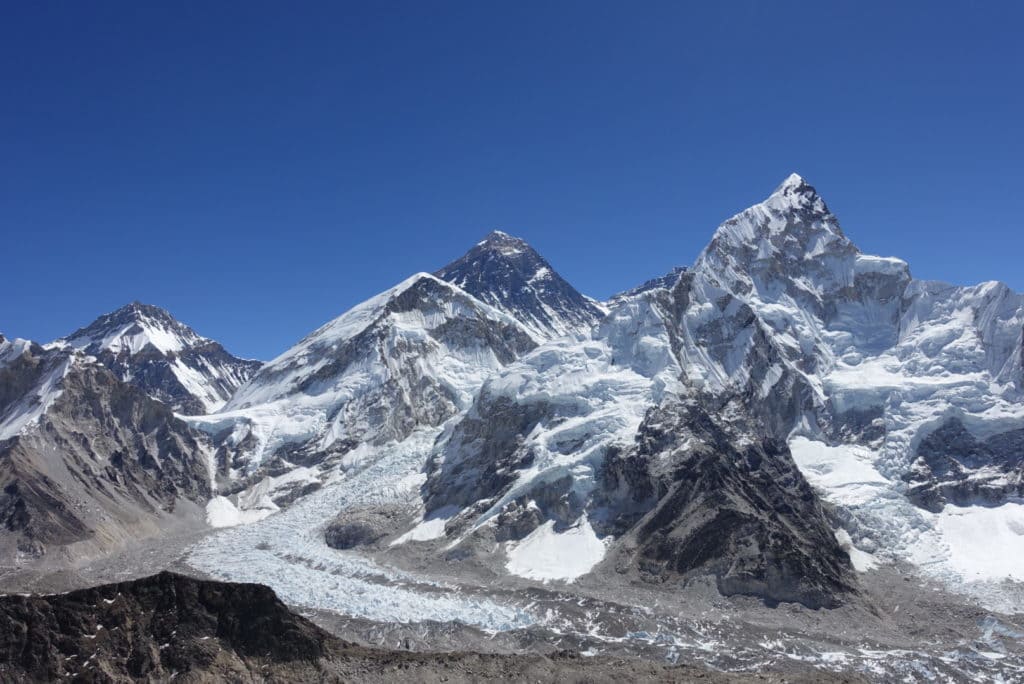
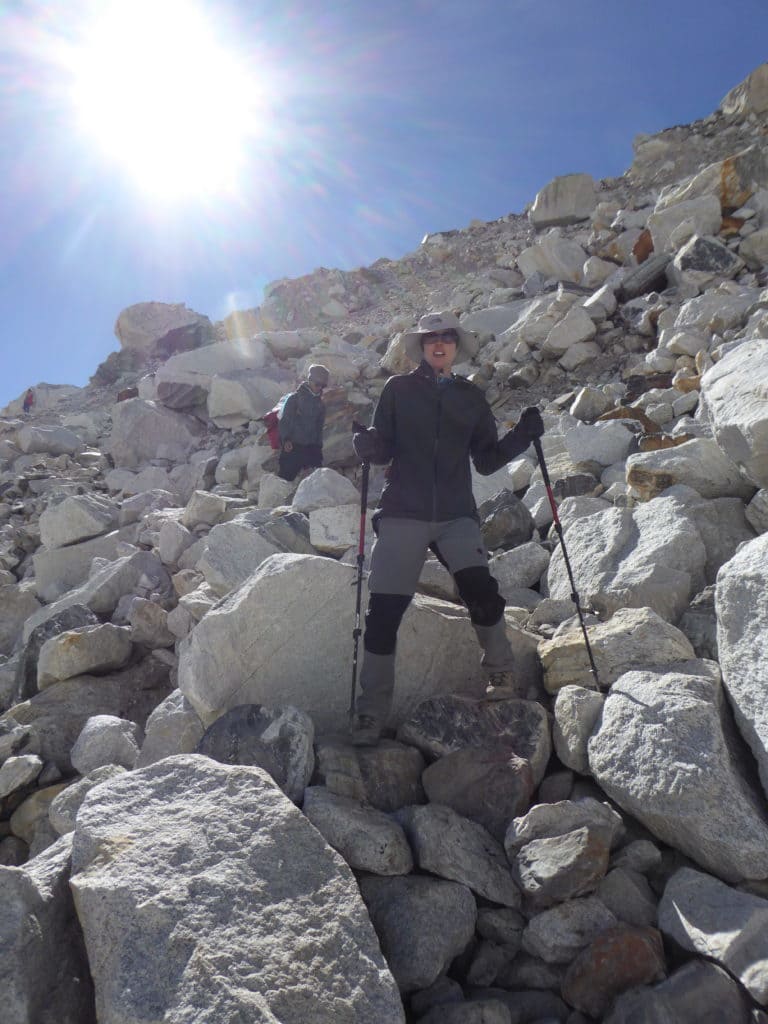
A few minutes later we were descending a trail of boulders down onto the Khumbu Glacier itself. A couple hundred meters onto the glacier and we had arrived at Everest Basecamp! Yes, basecamp is situated on the Khumbu Glacier itself! It moves slowly enough that a tent city can be erected to serve the expedition teams that assault the mountain each and every spring. It was a truly magnificent feeling for all three of us to have finally made it to the base of the world’s tallest mountain. Not only was it a feeling of satisfaction in having achieved our goal, it was a feeling of relief as well. We had made it here, to an elevation of 5,364m/17,600ft, after enduring two weeks of strenuous trekking, altitude sickness, -20 degree nights, and less than desirable living conditions. I don’t think we would have made it here without each other. Kathy and I wouldn’t have made it to basecamp without Karen, and I don’t think Karen would have made it without us. There were many difficult days, but we persevered through encouragement, teamwork, and lots of grit!
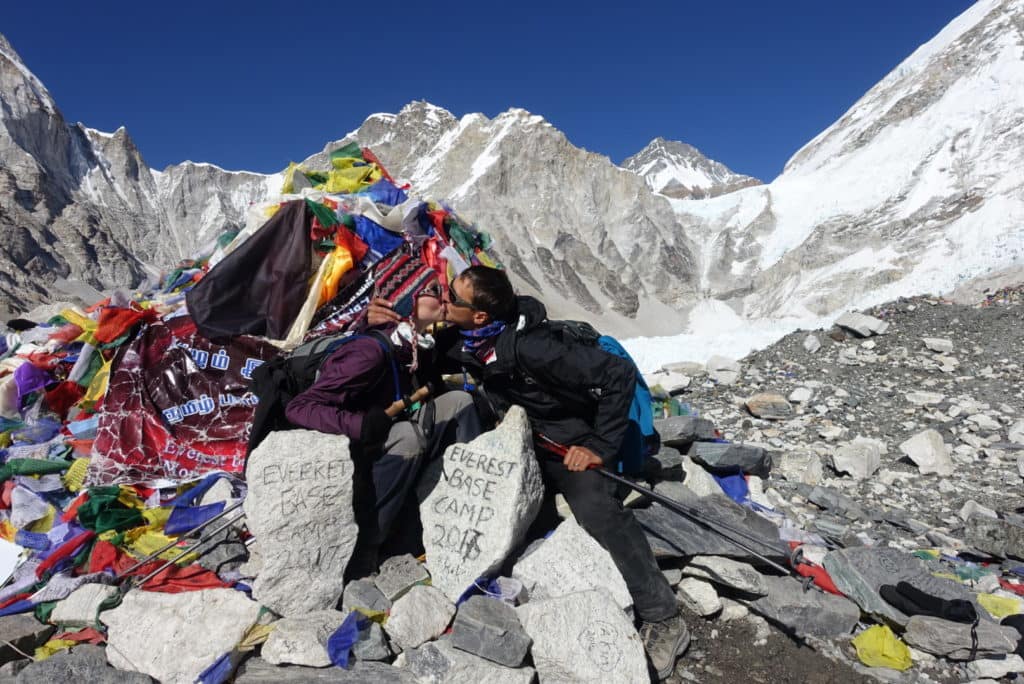
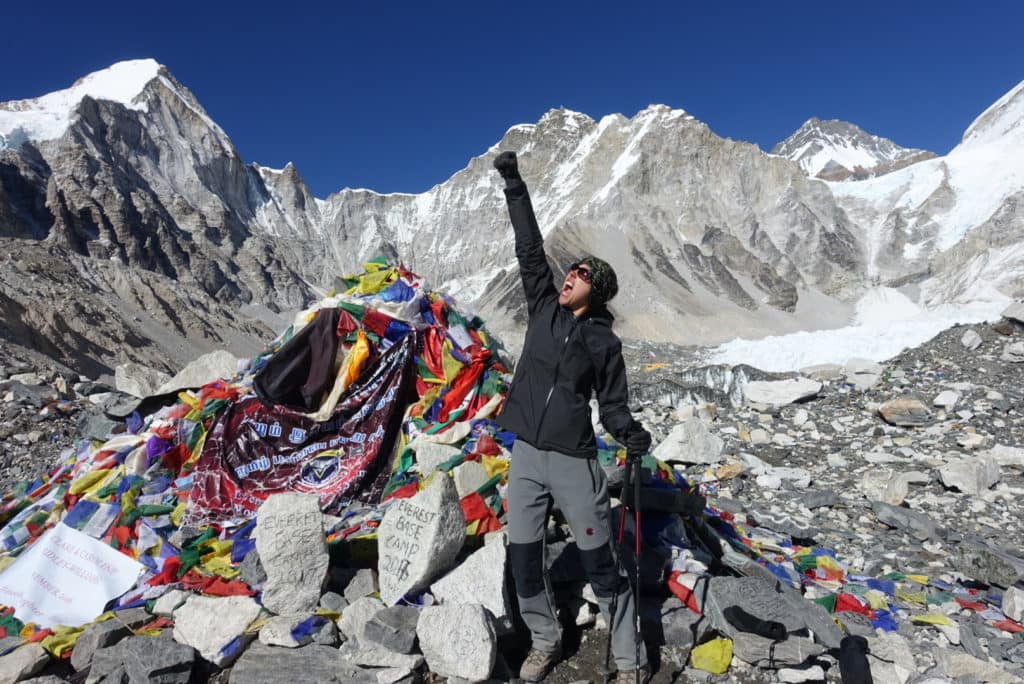
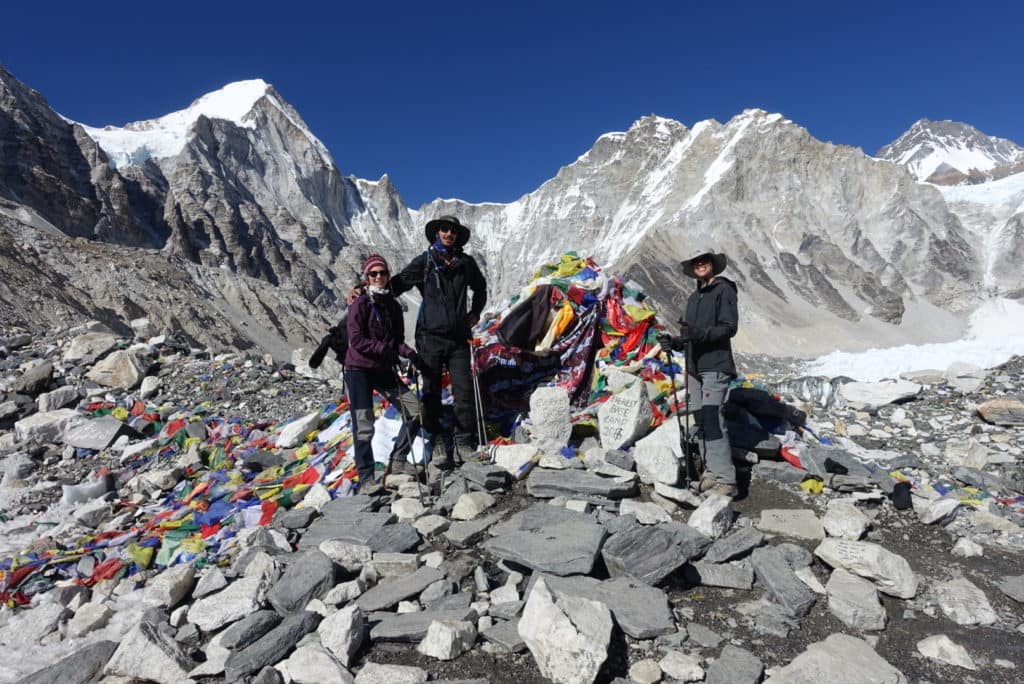
We returned to Gorak Shep for the night where we attempted to sleep after a long day of trekking. We didn’t sleep very well, but we expected we wouldn’t. At 5,100m/16,700ft, Gorak Shep isn’t exactly a prime location for human habitation. Regardless, there are people that make this town their home for part of the year (and some for the whole year). The porters and sherpas were even playing volleyball every day here in this windy and desolate place! We could hardly even walk, let alone play sports!
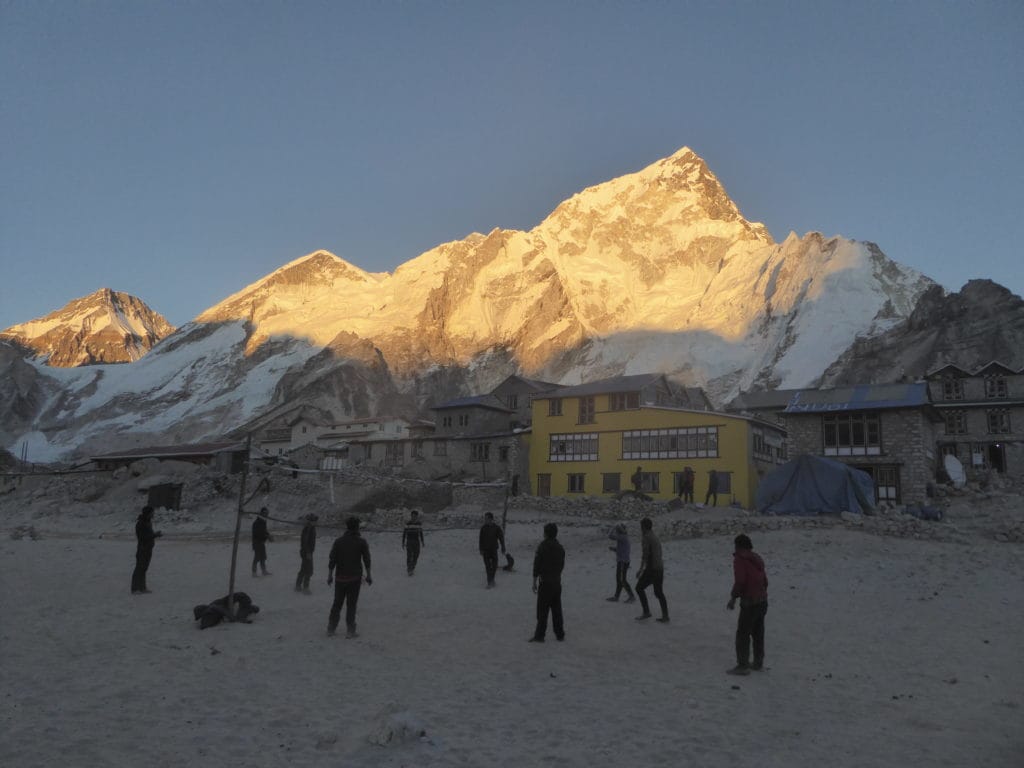
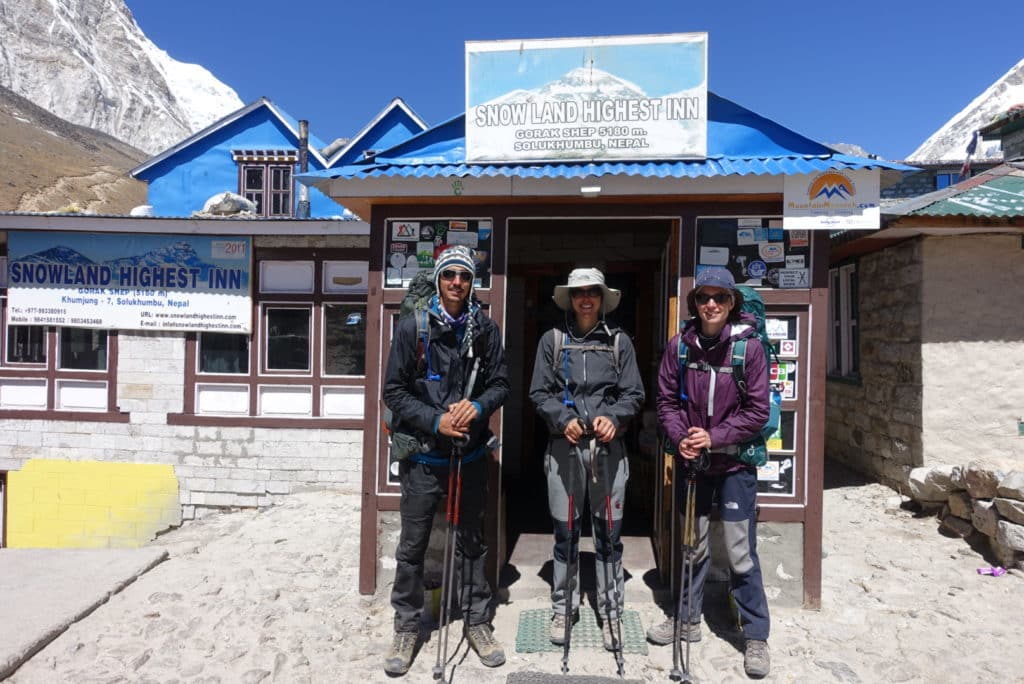
The next day I woke up early in the morning to hike up Mt. Kalla Patthar, while Karen and Kathy stayed behind in the village. The climb up this mountain was again one of the most difficult climbs I’ve ever done. However, after 2.5 hours of climbing I had made it to the top of the mountain at 5,550m/18,200ft. The highest point I’ve ever been in my life! The views from atop this mountain are considered some of the best in the Himalayas, and it was indeed a truly remarkable place. I forgot about the shortness of breath that I had and just sat there for 30 minutes and took in the scenery surrounding me. After staring at the roof of the world for a while, I decided it was time to take a few pictures and videos. Of course as I took my camera out the weather began to change and the wind began to slam into me. Needless to say, I hastily finished up the pictures and videos and began to make my way down. It was a quick 45 minutes back down to Gorak Shep where Karen and Kathy were waiting. We gathered up our gear and began the march back towards civilization!
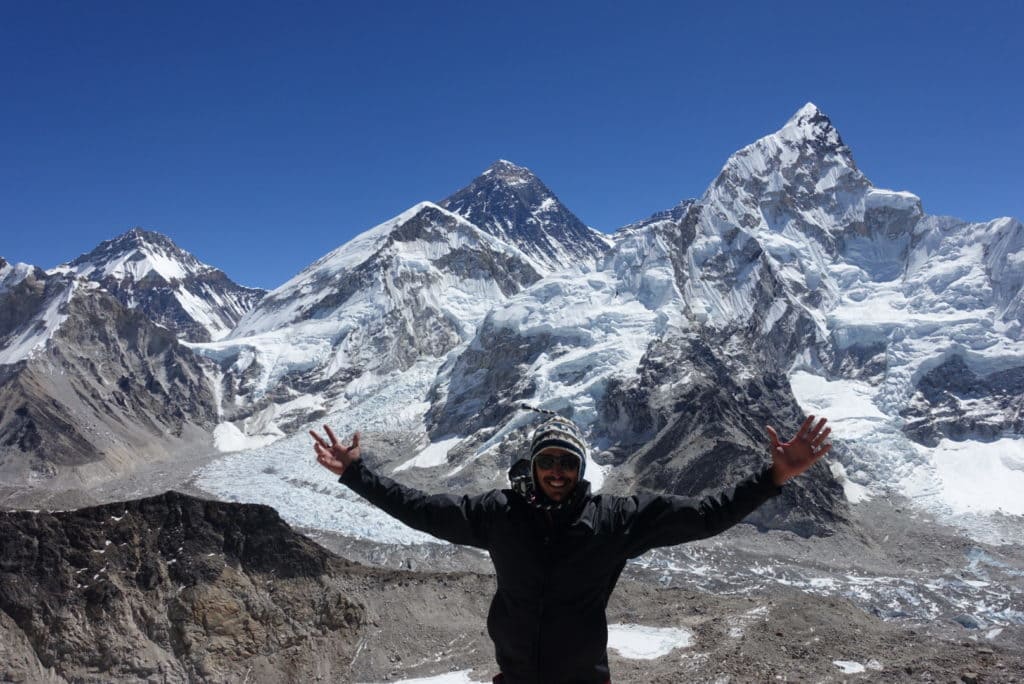
Here is a video I took on top of the mountain. Sorry, but the wind makes things a bit hard to hear!
It took us 4 days to get back down, but it seemed like a cakewalk compared to the 14 days it took us to get up to basecamp. We spent the first night on the way down in Leboche where Kathy first got sick and the second in a town called Pengboche, at a lodge owned by Apa Sherpa who summited everest 21 times! The third night on the way down was spent back in Namche Bazaar where Karen and I celebrated our accomplishment by drinking our first beers of the trip. The last night was spent back in Lukla, where we nervously hoped for clear weather so our flight wouldn’t be cancelled. We couldn’t wait to get out of the mountains and back to Kathmandu where warm showers and fresh fruit and vegetables were calling our names!

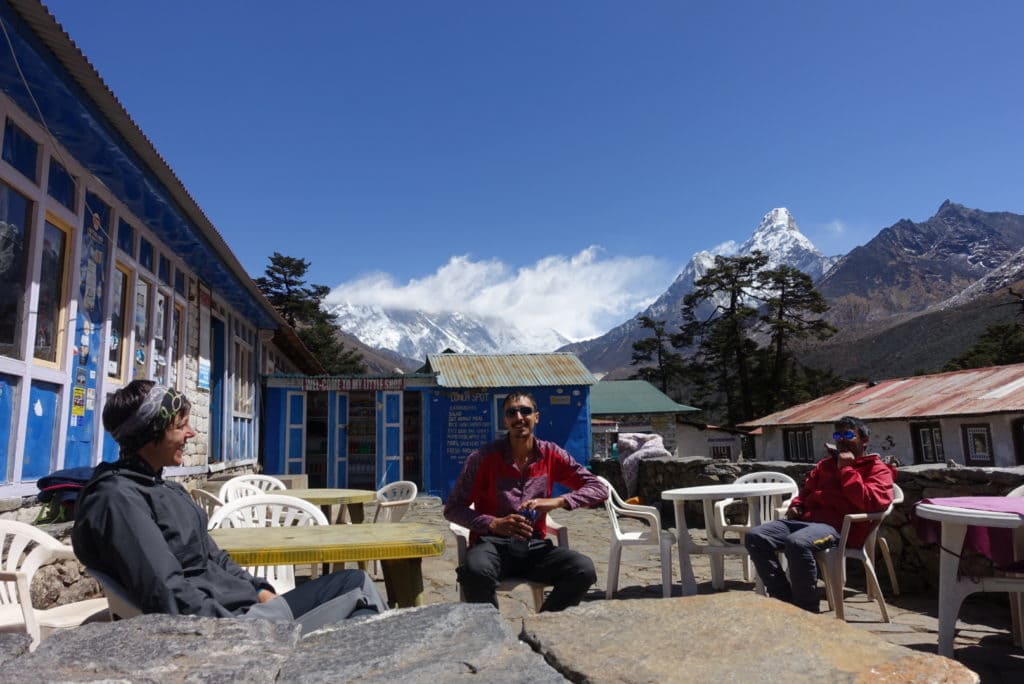

I must say, the Everest Basecamp trek was probably the most epic adventure that we’ve ever had. It was equal parts amazing, frustrating, cold, beautiful, exhausting, intimidating, and enlightening. The himalayan mountains are remarkably beautiful, in all their forms, and the people that inhabit the valleys at the foot of them are equally wonderful. This mix of majestic landscapes and truly friendly people was inspirational to experience. It won’t be easily forgotten.

